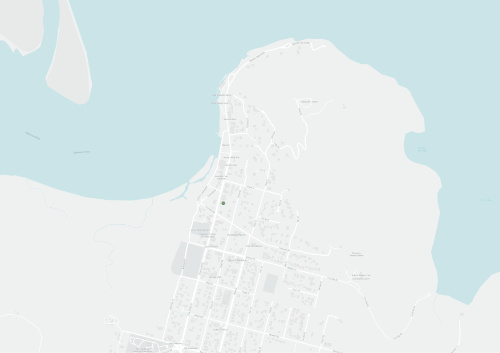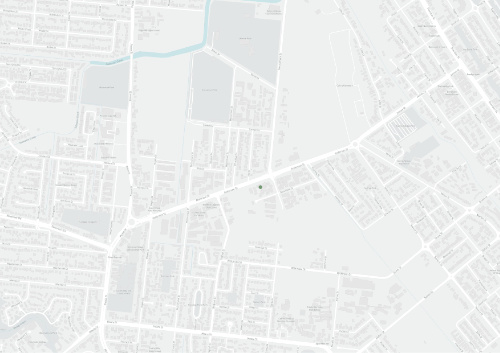Plan Explorer
Filter by:
Region
Topic
Sector
Other
Results
Port of Weipa environmental management plan
Current StrategicThis environmental management plan was released by the North Queensland Bulk Ports Corporation as part of their environmental program with the objective of acting as a reference document for all then-current and potential users of the Weipa port.
Napranum Community Plan
Current CommunityThe Napranum Shire Council released a community plan in 2012 looking at future development for (then) the next 10 years.
Brumby Hollow Property Pest Management Plan
Obsolete OperationalThis plan outlines the sustainable land management practices for Brumby Hollow over 4 years. Objectives are:
Bunata Property Pest Management Plan
Obsolete OperationalThis plan aims to protect the economy and environment of Bunata from the adverse impacts of weeds and feral animals.The objectives for weed and feral animal management in Bunata over the next 4 years are:
Butchers Hill Station Pest Management Plan
Obsolete OperationalTo manage the land of Butchers Hill Station, in a sustainable way, by controlling weeds and pest animals on the property, and ensuring it’s economic and environmental viability continues into the future.
Threats to priority species of the Cape York Peninsula region
Current Government PolicyOn day one of the regional workshop, participants used their knowledge of individual species to identify the major and minor regional threats that are affecting each species. On day two of the regional workshop, species were grouped by major threats.
Cape York Peninsula Feral Pig Management Plan 2006-2009
Obsolete OperationalThe Cape York Peninsula (CYP) Pest Management Strategy provides a planning framework for coordinated pest management between research bodies, agencies, communities, industries, individuals and the government.
Queensland Pest Animal Strategies - Feral Pigs (Sus scrofa)
Obsolete Government PolicyThe overall vision of the feral pig management strategy is to use best practice
management to minimise the impact of feral pigs on the environment, economy and
health of Queensland.
The strategy is intended to achieve five outcomes:
Cape York Peninsula Pest Management Strategy
Obsolete StrategicThe Cape York Peninsula Pest Management Strategy (CYPPMS) is a broad over-arching document that establishes a Cape-wide planning framework for integrated pest management by government, community, industry and individuals.
Jim's Joint Property Pest Management Plan
Obsolete OperationalThe plan has been prepared to protect the economy and environment of “Jim’s Joint” from the adverse impacts of weeds and feral animals.
Julery Pastoral Property Pest Management Plan
Obsolete OperationalThe plan represents a workable pest management program which identifies, combats and eradicates declared environmental pest plants and feral animals for Julery Pastoral.
Maitland Downs Property Pest Management Plan
Current OperationalThis plan provides a sustainable land management program for Maitland Downs, to control weeds and pest animals on the property, to ensure it’s economic and environmental viability continues into the future.
Cape York Peninsula Pest Management Plan 2006 - 2011
Obsolete StrategicThe Cape York Peninsula Pest Management Plan (CYPPMP) establishes a Cape-wide planning framework for integrated pest management by Government, Community, Industry and Individuals.
Eastern Kuku Yalanji Indigenous Protected Area Management Plan Stage 2
Current CommunityJalunji-Warra Land and Sea Country
(excerpt)
Cape York Peninsula Regional Biosecurity Strategy
Current StrategicCape York Natural Resource Management (Cape York NRM), Cook Shire Council (CSC), Weipa Town Authority, Wujal Wujal, Hopevale, Lockhart, Mapoon, Napranum, Aurukun, Pormpuraaw and Kowanyama Aboriginal Shire Councils and the Northern Peninsula Area Regional Council (NPARC) have collaboratively devel
Recently added
Cape York Peninsula Land Use Strategy: Natural Resources Analysis Program: Digital Geological Data for Cape York Peninsula
CYPLUSGeospatial information gathered previously was assembled and analysed to create a single integrated digital geological map of the CYPLUS area derived from the appropriate previous 1:250,000 series maps however with amendments and new information incorporated whre possible.
Cape York Peninsula Land Use Strategy: Natural Resources Analysis Program: Development, Maintenance and Coordination of the Geographic Information System (GIS) for Cape York Peninsula
CYPLUSThe CYPLUS GIS was created to support the collection, anaysis and display of natural resource, social, and economic data which arrose from the enactment of stage 1 of the Cape York Peninsula Land Use Strategy.
Cape York Peninsula Land Use Strategy: Land Use Program: Current Administrative Structures on Cape York Peninsula
CYPLUSThis project was commisioned in 1994 by CYPLUS to provide a description of the instiutional structures on the Cape York Peninsula that have relevance for land use planning and resource management.
Cape York Peninsula Land Use Strategy: Land Use Program: Economic Assessment and Secondary Tertiary Industries of Cape York Peninsula
CYPLUSThis report was commisioned by the CYPLUS task force for the Centre for Applied Economic Research and Analysis (CAERA) at James Cook Univeristy of North Queensland to perform a cross-sectoral economic assesment of the regional economy in the Cape York Peninsula.
Cape York Peninsula Land Use Strategy: Land Use Program: Fire on Cape York Peninsula
CYPLUSThis report was commisioned by CYPLUS and brings together published material on fire that is of relevance to the Cape York Peninsula.
Cape York Peninsula Land Use Strategy: Land Use Program: Indigenous Management of Land and Sea and Traditional Activities in Cape York Peninsula
CYPLUSThe Indigenous Mannagement of Land and Sea (IMLS) report was compiled by anthropologists and other specialists whose contributions relied on their long standinging familiarity with the Cape York Peninsula and the conditions of it's indigenous peoples.
Cape York Peninsula Land Use Strategy: Natural Resources Analysis Program: Groundwater Resources of Cape York Peninsula
CYPLUSThe study area of this report covered some 143,000 square kilometre, and is remote and isolated from all Australian population cenrs. This area includes Cape York Peninsula from north of Cooktown and some selected areas of the Torres Strait Islands.
Cape York Peninsula Land Use Strategy: Natural Resource Analysis Program: Flora Data and Modelling for Cape York Peninsula
CYPLUSThe Flora Data and Modellng Project was one of three projects undertaken by ERIN for the Natural Resources Analysis Program of CYPLUS stage 1.
Cape York Peninsula Land Use Strategy: Natural Resources Analysis Program: Insect Fauna Survey of Cape York Peninsula
CYPLUSIt was estimated that two out of every three species of living thing on the Cape York Peninsula are insects. This report surveyed a cross section of the Cape York Peninsula's insects and this provides information on the largest portion of the regions biodiversity.
Cape York Peninsula Land Use Strategy: Land Use Program: Land Degradation in Cape York Peninsula
CYPLUSThis project evaluated land degradationin terms of soil erosion and soil salinity. Soil erosion was examined by the Queensland Department of Primary Industries and the Australian Geological Survey Organisation with assistance from the Bureau of Resource Science.

